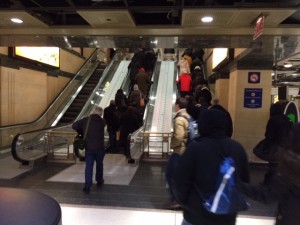Who’s a fan of the proposed “vertical addition” to Chicago Union Station? Except for DePaul University transportation expert Joe Schwieterman, almost nobody. Here’s a sampling of the critics from my story posted today on TRAINS magazine’s News Wire:
a fan of the proposed “vertical addition” to Chicago Union Station? Except for DePaul University transportation expert Joe Schwieterman, almost nobody. Here’s a sampling of the critics from my story posted today on TRAINS magazine’s News Wire:
Since developers announced plans to remake historic Chicago Union Station on June 25, the critics of the proposal have outnumbered the fans by an overwhelming margin.
In newspaper pages, on blogs, and on social media, the public has generally savaged a design by Chicago-based Riverside Investment & Development and Convexity Properties to top the neoclassical head house, completed in 1925, with a modernistic, seven-story steel and glass addition.
The proposed glass structure would contain 404 apartments. Below, in the existing building, 330 hotel rooms would be built.
Architecture critics say the two designs are incongruous. Writing in The Architect’s Newspaper, Elizabeth Blasius described the addition as “a self-inked address stamper.”
“The proposed addition is not only an imbalance in terms of design, it’s also condescending to the station itself, the architectural equivalent of a head patting, or worse,” Blasius wrote.
Blair Kamin, Pulitzer Prize-winning architecture critic for the Chicago Tribune, followed up on his initial criticism of the design in the newspaper by saying in an interview with Chicago’s WTTW:
“The architects are trying to create a design that they say would be compatible with, yet distinct from the addition. But in this case, the addition is not compatible in the least with the existing Union Station. It’s top heavy. It is a grid,…

